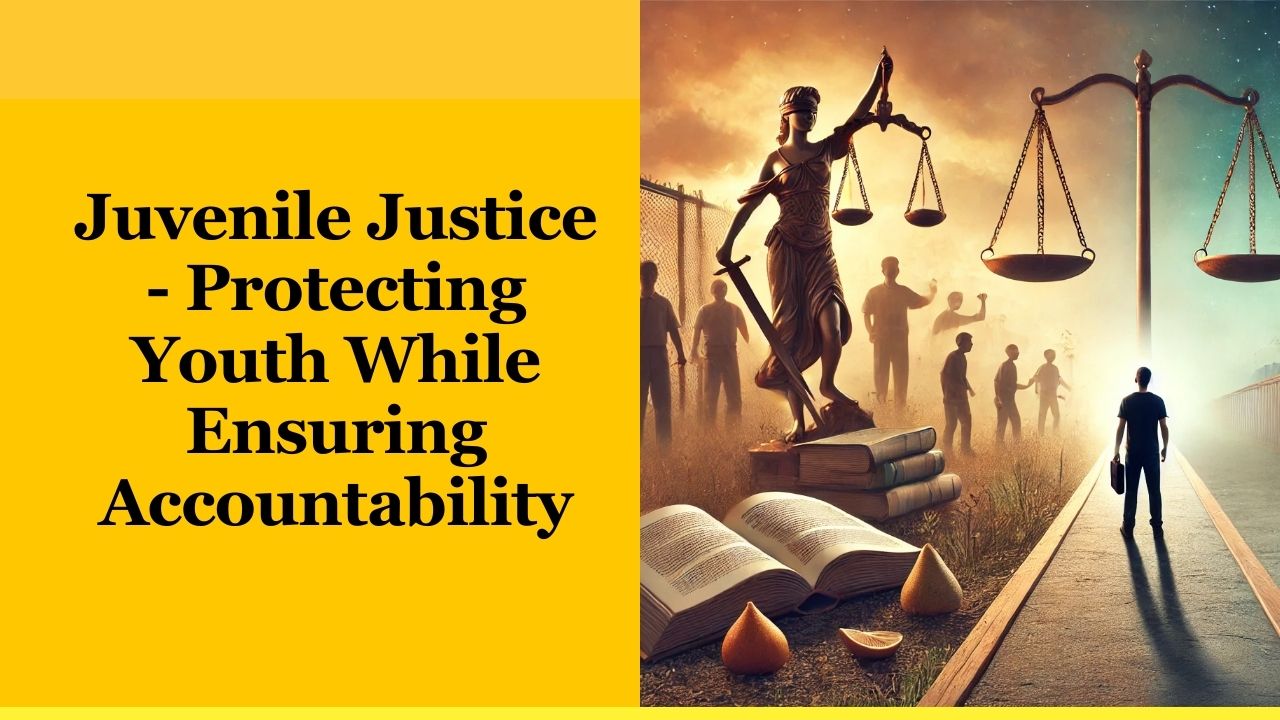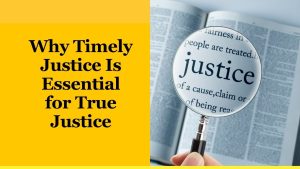The juvenile justice system exists to handle youth offenders in ways that protect their rights, promote rehabilitation, and ensure accountability. Unlike adult courts, it recognizes that young people are still developing and are more capable of change.
In 2025, with rising focus on mental health, education, and restorative approaches, juvenile justice systems aim to reduce recidivism and reintegrate youth into society while still maintaining public safety. This balance is critical to creating a fair and future-focused justice system.
Understanding the Juvenile Justice System
Juvenile justice deals with people typically under 18 years old who are accused of breaking the law. It emphasizes:
- Rehabilitation instead of punishment
- Confidential proceedings to protect privacy
- Individualized treatment plans for education and mental health
- Accountability through community-based consequences
This approach is based on the belief that youth are developmentally different from adults and can be redirected away from crime with the right support.
Juvenile vs. Adult Justice: Key Differences
| Aspect | Juvenile System | Adult System |
|---|---|---|
| Goal | Rehabilitation | Punishment |
| Focus | Individual needs, behavior change | Legal guilt, penalties |
| Privacy | Confidential hearings | Public trials |
| Terminology | “Delinquent act,” “adjudication” | “Crime,” “conviction” |
| Sentencing | Flexible, treatment-based | Fixed, punitive |
| Records | Often sealed or expunged | Public and permanent |
Key takeaway: The juvenile system prioritizes reform and reintegration, while the adult system focuses on punishment and deterrence.
How the Juvenile Justice Process Works
The juvenile justice process is designed to be less adversarial and more supportive than adult criminal proceedings. It generally includes:
- Intake or Diversion
- Police or intake officers decide whether to file formal charges
- Low-risk cases often get diverted to community programs
- Detention Hearing
- Determines if the youth should remain in custody or go home while awaiting trial
- Adjudication (Trial)
- A judge (not a jury) decides if the youth committed the alleged offense
- Disposition (Sentencing)
- Focuses on treatment, counseling, community service, or probation
- Secure confinement used only for serious offenses
- Aftercare or Reentry
- Helps youth transition back into school and community
This process ensures legal fairness while encouraging positive behavior change.
Latest Juvenile Justice Statistics (2025 Snapshot)
| Indicator | 2010 | 2025 |
|---|---|---|
| Juvenile arrest rate (per 100,000) | 4,800 | 2,100 |
| Youth in residential placement | 70,000+ | 24,000 |
| Average daily cost per detained youth | $250 | $615 |
| Recidivism rate (rearrest within 3 years) | 55% | 35% |
| States using diversion/restorative programs | 25 | 47 |
Key insights: Youth incarceration rates have declined by over 60% since 2010, while restorative and diversion programs are now used in nearly all states.
Balancing Protection and Accountability
Juvenile justice systems must walk a fine line between protecting vulnerable youth and ensuring accountability for harmful behavior.
Protecting Youth
- Confidential records prevent lifelong stigma
- Special education and mental health screenings address underlying issues
- Safe detention standards prevent abuse and harm
- Legal safeguards ensure due process and age-appropriate treatment
Ensuring Accountability
- Restitution and community service teach responsibility
- Graduated sanctions show consequences escalate with behavior
- Victim-offender mediation allows youth to make amends
- Behavior contracts and probation hold youth accountable while supporting them
This dual approach promotes fairness while building responsible citizens.
The Role of Mental Health and Education
Most youth who enter the justice system have experienced trauma, poverty, learning disabilities, or mental health disorders. Addressing these root causes is essential.
Mental Health Interventions
- On-site counseling in juvenile facilities
- Trauma-informed care to reduce reoffending
- Access to psychiatrists and social workers
Education Programs
- On-site accredited schools
- GED and vocational training
- Transition planning to reintegrate youth into public schools
Education and mental health support significantly reduce recidivism and improve long-term outcomes.
Restorative Justice in Juvenile Systems
Restorative justice (RJ) is a growing practice that emphasizes repairing harm rather than punishing the offender. It is now used widely across the U.S.
How It Works
- Youth meet victims in facilitated conferences
- Offenders accept responsibility and agree to restitution or community service
- Victims share how the offense affected them
Benefits
- Recidivism rates drop below 20% in many RJ programs
- Victim satisfaction rates exceed 85%
- Stronger family and community ties
RJ allows youth to understand the impact of their actions and reconnect positively with their communities.
Community-Based Alternatives to Detention
Research shows that incarcerating youth increases their chance of reoffending, while community-based alternatives are cheaper and more effective.
| Program Type | Description | Average Cost (per youth/year) |
|---|---|---|
| Probation | Supervision, counseling, curfews | $3,500 |
| Day Reporting Centers | Daily check-ins, education, therapy | $6,000 |
| Electronic Monitoring | GPS ankle bracelets | $2,500 |
| Therapeutic Foster Care | Intensive support in family settings | $9,000 |
| Secure Confinement | Locked facilities | $225,000 |
Key point: Community programs cost far less and achieve better long-term outcomes than secure confinement.
Challenges Facing Juvenile Justice in 2025
Despite progress, several challenges persist:
- Racial and ethnic disparities: Youth of color remain overrepresented
- Uneven access to quality legal defense and treatment
- Funding gaps for community-based programs
- Staff shortages in juvenile facilities and probation services
- Technology gaps affecting case tracking and data sharing
Addressing these issues is crucial to create a fairer, more effective juvenile justice system.
The Future of Juvenile Justice
The future of juvenile justice is moving toward rehabilitation, equity, and innovation. Trends include:
- Raising the age of juvenile jurisdiction to 20 in some states
- Eliminating youth incarceration for status offenses like truancy
- Expanding diversion and restorative justice statewide
- AI-powered risk assessment tools for personalized case plans
- Increased collaboration between schools, social services, and courts
These reforms aim to build a system that corrects behavior while protecting opportunity.
Juvenile justice is about second chances. It recognizes that young people are still growing and can turn their lives around.
By protecting youth, ensuring accountability, and focusing on rehabilitation, the system creates safer communities and brighter futures. Expanding restorative practices, mental health care, and education will help more youth escape cycles of crime.
Ultimately, juvenile justice is not just about dealing with mistakes—it’s about helping young people build responsible, successful lives.
FAQs
What is the main goal of the juvenile justice system?
Its main goal is rehabilitation, helping youth correct behavior while ensuring accountability, public safety, and protection of their rights.
Can juveniles be tried as adults?
Yes, in serious violent cases, some youth can be transferred to adult court, though this practice is becoming less common.
Do juvenile records stay forever?
In most states, juvenile records can be sealed or expunged if the youth completes their sentence and avoids new offenses.




